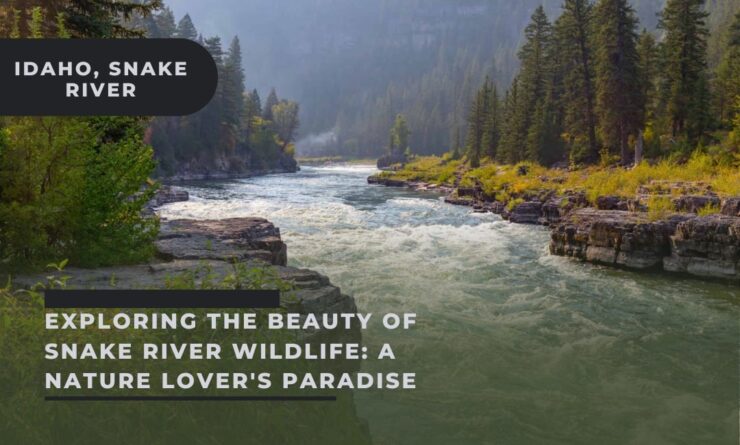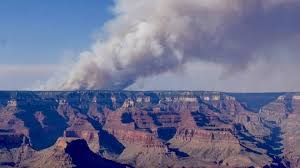Delve into the enchanting Snake River, a mesmerizing waterway traversing the American West. With a length of about 1,078 miles, it stands as one of the longest rivers in the region.
It is a crucial landmark in history, having served as a significant fur trade route and the path of the famed Lewis and Clark expedition. Presently, the Snake River continues to astonish visitors with its breathtaking landscapes, diverse wildlife, and exciting outdoor activities.
Experience tranquil fishing locales and thrilling rafting experiences, and let the Snake River’s charm engage your spirit as you delve into this remarkable natural gem. In this piece, we’ll explore the Snake River in its entirety!
History
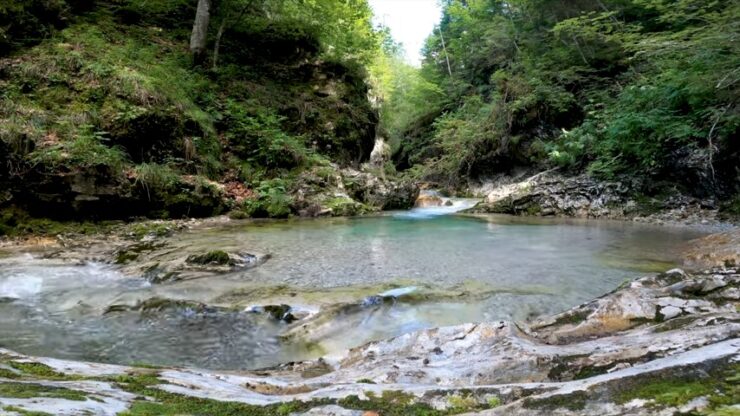
The Snake River’s naming is attributed to a misunderstanding between European explorers and the Shoshone tribe. A hand signal mistaken for a swimming snake led to the name “Snake River”, thus emphasizing the intriguing story of cross-cultural misinterpretation and the Shoshone’s deep connection with the river.
This majestic river functioned as a trading hub, as early fur traders and explorers noted, with proof of ancient trade centers going back millennia.
In southeast Washington, adjacent to the stunning Snake River, there are various ancient sites. One of them is the impressive Marmes Rockshelter, filled with history. For a staggering 11,000 years, this remarkable archaeological site has seen human activity.
Native Americans
Over the centuries, the Snake River witnessed the rise of two strong Native American factions asserting their control over the area. Extending their influence from southeast Columbia Plateau to west Idaho and north Oregon, the Nez Perce established their dominance. On the other hand, the Shoshone held sway over the majestic Shoshone Falls and the vast Snake River Plain, upstream and downstream.
Lewis and Clark
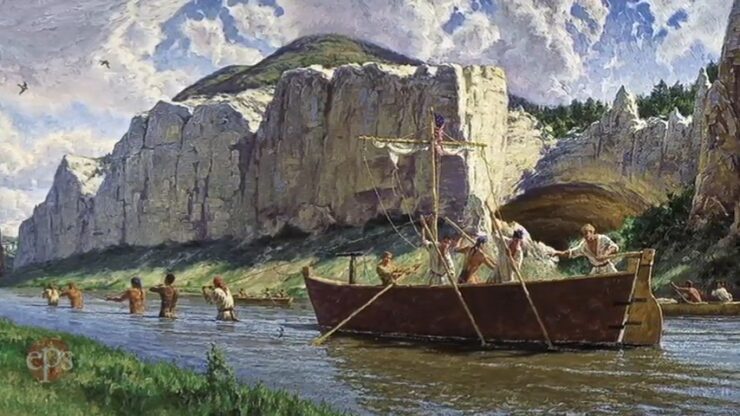
The extraordinary journey of Lewis and Clark from 1804 to 1806 was an epic adventure that crossed the daunting Rocky Mountains. They then journeyed down the spectacular Snake and Columbia Rivers, eventually reaching the glorious Pacific Ocean.
The U.S. Army Corps of Engineers
During the transformative years of the 1960s and 1970s, the lower Snake River underwent a remarkable change as the U.S. Army Corps of Engineers initiated a bold project. They sought to build four dams and locks to revolutionize the region’s shipping capabilities.
Today, it continues to hold importance as a natural and historical treasure, attracting visitors who appreciate its beauty and historical significance.
Size
With a whopping length of 1,078 miles, the Snake River covers a vast distance across six states: Idaho, Utah, Wyoming, Nevada, Washington, and Oregon. Additionally, the Snake River boasts a basin size of 108,000 square miles.
With a staggering average discharge of over 54,000 cubic feet per second, the Snake River stands as an impressive natural phenomenon. What sets it apart is its distinction as the largest river in North America that flows into the Pacific Ocean.
The river consists of 260.8 miles of wild sections characterized by unspoiled beauty. Along its course, there are also 186.4 miles of scenic areas, which captivate visitors with their picturesque landscapes. Finally, the Snake River offers 33.8 miles of recreational zones, providing opportunities for various water-based activities.
In terms of length, the Snake River ranks as the thirteenth-longest river in the United States.
Depth
On average, the Snake River has been measured to have a depth of approximately 16 feet and 4 inches. In different parts of the Snake River, you will encounter varying depths. Some sections may surprise you with their depth, while others may appear quite shallow. It is important to note that rivers are dynamic bodies of water, constantly changing their depth and shape over time.
Fish
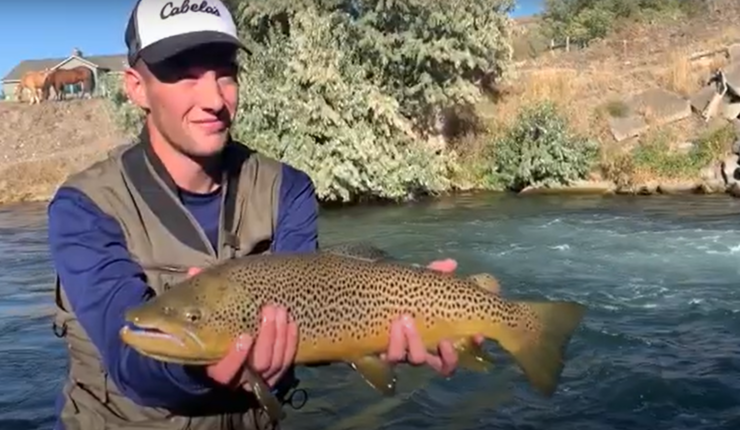
Despite being obstructed by four large dams, the Snake River sustains a variety of native fish species that play a crucial role in the ecological health of the Western United States. Among these species, Snake River salmon and steelhead undertake one of the longest journeys on Earth.
Salmon and steelhead face a challenging 900-mile swim through a series of dams before they can reach their spawning grounds in Idaho and Wyoming. The river also supports a diverse population of 35 native fish species, including spring and fall Chinook, summer steelhead, west slope cutthroat, red band, and rainbow trout, as well as sturgeon.
Fishermen from all over the country regard the South Fork of the Snake River as one of the best places for trout fishing. This part of the Snake River hosts a diverse range of trout species, including the elusive brown trout, the colorful rainbow trout, and the yellow cutthroat trout.
Hells Canyon
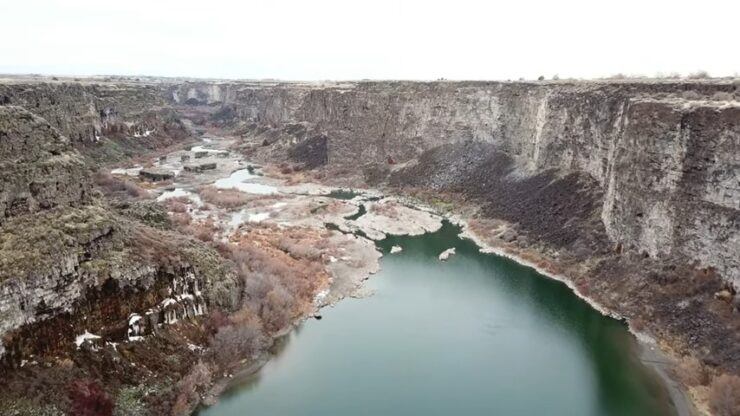
Within the breathtaking Hells Canyon, the wild and scenic stretch of the Snake River provides an exceptional backdrop for fishing steelhead, sturgeon, trout, and non-native bass.
Regrettably, fish like salmon and steelhead cannot access the upper Snake River and its tributaries due to the Hells Canyon Dam.
To maximize your chances of a successful fishing trip on the Snake River, it’s essential to consider the best time of year for specific fish species. For salmon fishing, the months of May to October are optimal. Trout fishing, on the other hand, is most productive during the spring and summer seasons. Finally, if you’re targeting Steelhead, the recommended period is from October to February.
Geology
Within the expansive western United States, the fascinating Snake River Plain reveals itself. It reveals three distinct sections that shape its captivating landscape: the western, central, and eastern plains.
The western plain, dating back approximately 11-12 million years, appears as a rift valley adorned with deposits of sediments from ancient lakes.
Its foundation boasts a composition of rhyolite and basalt, with a layer of basalt on top. It stands at a steep angle compared to the central and eastern plains, resembling awe-inspiring volcanic plateaus, such as the renowned Chilcotin Group nestled in the heart of Canada.
The eastern plain traces a remarkable narrative of the North American Plate’s journey across the powerful Yellowstone hotspot. It proudly showcases basalt formations from shield volcanoes, leaving an indelible mark on the landscape.
As it traverses the Basin and Range mountain structures, the eastern plain carves its path in harmony with the dynamic motion of tectonic plates.
The central plain, similar to the eastern one, contains thick layers of sediment from lakes and streams, including the notable Hagerman fossil beds.
Enormous rhyolite ignimbrite eruptions resulted in the formation of the Island Park and Yellowstone Calderas. Henry’s Fork Caldera potentially being the largest symmetrical caldera globally.
These eruptions produced massive amounts of ash. The younger volcanic activity covered the plains with basalt lava flows, including the Craters of the Moon National Monument.
The Snake River Plain showcases a variety of geological features, from rift valleys and lake sediments to volcanic plateaus and calderas. Its association with the Yellowstone hotspot and the unique deposition of ash and lava flows contribute to its remarkable geological significance.
Activities
From thrilling adventures to tranquil encounters with nature, Snake River offers a range of activities suitable for all types of adventurers. Whether you enjoy fishing, camping, or hiking, Snake River has something for everyone.
Camping
Camping at Snake River is an exciting adventure for outdoor enthusiasts seeking a nature-filled getaway. When it comes to finding the best camping grounds along Snake River, there are several noteworthy options to consider.
One significant campground is Swan Falls Dam Campground, located near the dam. This campground offers picturesque views of the river and surrounding hills, providing a serene atmosphere. It offers basic amenities such as restrooms and picnic tables.
Celebration Park is another popular choice, situated along the Snake River. This campground provides primitive camping options for visitors and is famous for its rich archaeological sites and petroglyphs. It offers a unique and immersive experience for those interested in history and cultural exploration.
For those venturing into Oregon, Farewell Bend State Recreation Area is worth considering. This campground features spacious campsites along the Snake River. The campsites offer amenities such as showers, electricity, and a boat ramp for water activities. It’s an excellent choice for both RV and tent camping enthusiasts.
Traveling to Idaho, Three Island Crossing State Park is a must-visit camping destination. It offers RV and tent camping sites along the Snake River, providing a mix of historical significance and natural beauty. The park holds historical importance as a pioneer crossing site, adding an educational element to your camping experience.
Before embarking on your camping trip, be sure to check availability and make reservations at your desired campground.
Hiking
Snake River is the perfect spot for outdoor enthusiasts with its breathtaking beauty and exhilarating hiking trails. Canyons, waterfalls, and picturesque vistas adorn this diverse landscape, offering a captivating escape into nature.
The beloved Snake River Trail is a remarkable 28-mile out-and-back route near White Bird, Idaho. With a moderate challenge, it’s perfect for backpacking, camping, and hiking, allowing you to immerse yourself in nature. Quiet moments can still be found during off-peak times. The trail is best from March to October, and leashed dogs are welcome.
The 7.3-mile Eureka Wagon Trail, following an old wagon road, rewards hikers with panoramic views of the Snake, Salmon, and Imnaha Rivers. In spring and summer, vibrant wildflowers add color. It’s a blend of natural beauty and cultural heritage.
For awe-inspiring vistas, embark on the 5.3-mile Summit Ridge Trail, situated on the fringes of the Hells Canyon Wilderness. This captivating journey leads to a scenic ridge where you can feast your eyes on panoramic views of the magnificent Snake River. You can also see the Seven Devils Mountains and the neighboring Wallowa Mountains.
Whether a seasoned hiker or nature enthusiast, Snake River’s hiking trails offer an unforgettable adventure amidst stunning landscapes and abundant wildlife.
Boating
Boating at Snake River offers a thrilling experience amidst stunning natural beauty. The river stretches across 6 states, providing ample opportunities for boating enthusiasts.
One of the best spots to explore is Hells Canyon, the deepest river gorge in North America. Its remote and rugged landscape offers an exciting adventure for boaters.
For those seeking a serene boating experience, the Swan Falls Dam in Idaho is a popular choice. It provides calm waters and picturesque surroundings, perfect for a peaceful day on the river. Another notable boating spot is Brownlee Reservoir, situated on the Idaho-Oregon border. This expansive reservoir offers plenty of space for water sports and fishing.
When it comes to boat ramps, Heller Bar on the Washington side is an excellent choice for launching your vessel. It provides access to Hells Canyon and is known for its abundant salmon runs. In Idaho, the Spring Bar boat ramp is a convenient entry point for exploring the Snake River’s breathtaking canyons.
Remember to follow all safety guidelines and obtain necessary permits before embarking on your boating adventure at Snake River.
FAQ
Can I swim in the Snake River?
Yes, you can swim in the Snake River, but you should be cautious about where you choose to swim. Rivers can have strong currents, particularly near dams and waterfalls, and the water may be cold, particularly in higher elevations. Always adhere to safety precautions and guidelines, and never swim alone.
Are there any notable wildlife species that live in or near the Snake River?
The Snake River basin is home to a rich variety of wildlife species. Aquatic species include salmon, trout, and sturgeon. In addition, you may spot otters, beavers, and ducks. The surrounding land and sky are home to animals like deer, elk, bears, eagles, and many other bird species.
Are there guided tours available in the Snake River region?
Yes, there are a variety of guided tours available in the Snake River region. These range from rafting and boating tours, which will take you down the river, to hiking tours and historical tours which focus on the history and natural beauty of the region.
What are the safety measures to be followed while exploring the Snake River?
It is important to be prepared and follow safety measures while exploring the Snake River. These include wearing appropriate footwear, staying hydrated, carrying a map, and being aware of wildlife. If you are boating or swimming, always wear a life jacket, and avoid areas with fast currents or underwater hazards. Make sure you are familiar with local regulations and guidelines, and always let someone know your plans before you set out.
What is the best time of year to visit the Snake River?
The best time to visit the Snake River depends on what activities you plan to do. For fishing, spring, summer, and fall are the best seasons. For hiking and camping, spring and summer offer the most favorable weather. Winter can be very cold, but also offers stunning landscapes for those who are prepared for the conditions.
Is the Snake River accessible for individuals with mobility issues?
Accessibility can vary widely depending on the specific location along the Snake River. Some parks and recreational areas offer facilities and trails that are accessible for individuals with mobility issues. However, more rugged and remote areas of the river may not be easily accessible. It is best to check with local park services or tourism offices for detailed accessibility information for specific locations.
Is it possible to do overnight boating or rafting trips on the Snake River?
Yes, there are opportunities for overnight boating or rafting trips on the Snake River. This often involves camping on the riverside. Make sure to plan your trip carefully, obtain necessary permits, and ensure you have appropriate camping gear and supplies.
Final Words
Exploring the Snake River is akin to stepping into a living, breathing history book. As you paddle down the river, hike its surrounding trails, or camp on its banks, you’re following in the footsteps of the region’s earliest inhabitants, fur traders, and iconic explorers like Lewis and Clark.
Whether you’re casting a line to catch trout, white-water rafting through its challenging currents, or simply absorbing its stunning natural beauty, the Snake River is sure to leave a lasting impression.
This remarkable waterway, with its compelling history, rich wildlife, and diverse landscapes, encapsulates the spirit of the American West.
Its captivating blend of tranquil beauty and thrilling outdoor opportunities is an open invitation for every adventurer at heart. Each twist and turn of the Snake River holds a new surprise, making it a destination that always calls for a return journey.

